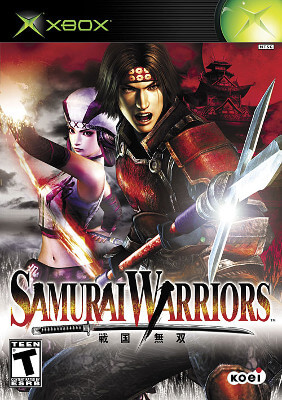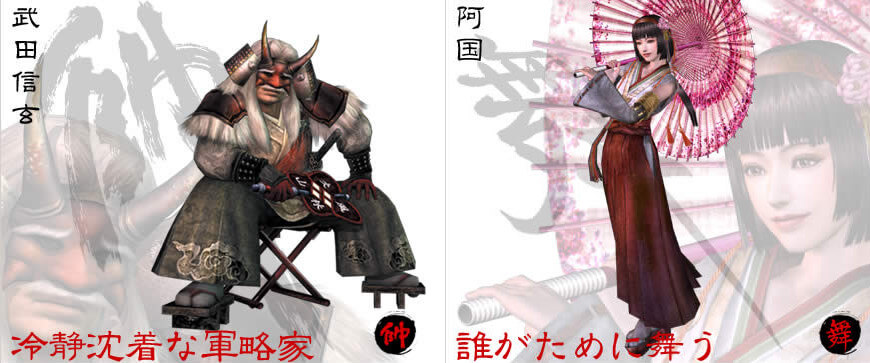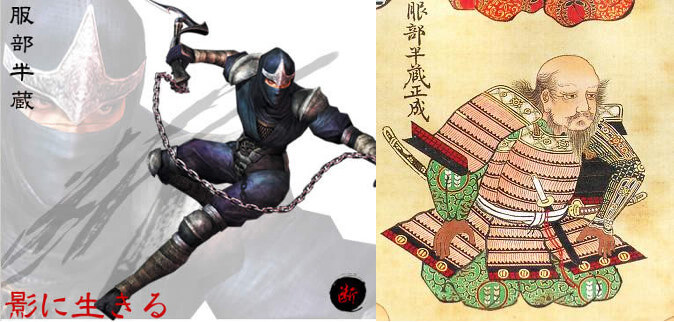by Jay
- 7 minute read - 1466 wordsThe header image for this post was created by WallpaperSafari, the original version is available here
In 2004 there were a few things that every friend of mine knew about me:
- I was a nerdy university student studying video games programming
- I worked at a large UK based video game retail store
- I was studying Japanese
One day at work, more than likely while I was re-stocking some shelves, I saw the box for an Xbox game and was enamoured.

The box art for the XBOX release of the first Samurai Warriors game
Image source: By Source, Fair Use: http://uk.ign.com/games/samurai-warriors/xbox-677080
Just look at those colours and lines. The obscured castle in the background.
I bought it and couldn’t wait to play it when I got home.
The Game
Samurai Warrirors was a video game developed by Koei’s Omega Force team in 2004 for both PlayStation2 and Xbox.
The game is loosely based on the events of the Segoku Jidai (or “Warring States”) period of Japanese history, and contains many of the famous Daimyo (General), Samurai and Ninja warriors of the time period
with the timeline of the Sengoku Jidai futzed about with, to bring the characters together
The story of the game is played out between hack and slash campaigns where the player must reach certain objectives on the battle field. These objectives might be defeating certain enemies, protecting allies or collecting certain items.
There are several, branching story lines, mostly based on conjecture or “What if…” style. “What if Takeda Shingen was killed in battle by Hattori Hanzo?” for example
Which is the branch in Sanada Yukimura’s storyline
You control one of four starting characters and play through their branching story lines. Different story line paths are unlocked by completing different objectives in the earlier stages. Through playing the storylines and completing hidden objectives, you can unlock a few extra characters for free play mode.
Character Design
I’ll preface all of this by saying that I’m not a designer.
Looking at the characters, you can see that the colours chosen are based on Ukiyo-e prints of the time. You can see this best with Takeda Shingen and Okuni, their outfits are colourful but muted.

The character designs for Takeda Shingen and Okuni
Image sources: By Source, Fair Use: http://koeiwarriors.co.uk/
Most of the characters have an outfit and look which matches their time (16th century Japan) very well, as with Takeda and Okuni above.
But other characters have a more modern look to them. For example Sanada Yukimura (on the cover art image, above) and Hattori Hanzo.

The character design for Hattori Hanzo vs a woodblock print of his likeness
Image sources: By Source, Fair Use: http://koeiwarriors.co.uk/ and https://en.wikipedia.org/wiki/Hattori_Hanzō
Having seen real Samurai armour and weapons while in Japan
I visited Hirado castle, back in 2008
I can say that, to me anyway, most of the amour is authentic enough; with an air of caricature and 21st century style. The whole game has a very manga-esque design to it. A lot of the characters match the character designs of Vagabond by Takehiko Inoue, which is a fictionalised version of Miyamoto Musashi’s life story.
and I was totally recommend that people read Vagabond if they’re into graphic novels, manga, or Japanese history (even though it’s fictionalised a lot of the characters are based on real people)
Controls
Playing the Playstation 2 version of Samurai Warriors recently, I found it a little slow moving. Especially compared to Samurai Warriors 4-II, Warriors Orochii 3 or whatever the current version of Dynasty Warriors is
Probably Dynasty Warriors 15: Xtreme Beach Volleyball
… and now I have a vision of Cao Cao in a bikini. Send help!
Samurai Warriors, at least the way that I play it, is a button masher. I could spend a little more mental energy planning out how I’m going to take down a platoon of enemy soldiers, but there’s an instant gratification involved in running at a cluster of soldiers and mashing the attack button, shouting “DIE FIEND!”, until they’ve all been dealt with.
… just me, then?
Each character has a large selection of moves, which are performed by alternating between the attack and strong attack buttons. They aren’t all available from the off, and must be unlocked as you gain XP by dispatching armies (and clearing the stage, obviously). Greater XP bonuses are given for higher difficulty levels, and stronger weapons are picked up by defeating enemy officers.
I guess, in that respect, it’s an action RPG button masher?
Gameplay
For the time, this game offered massive battlefields and thousands of enemies to defeat.
as with other games of it’s ilk, you don’t
The battlefields truly were massive, too. So much so that the PS2 version had a rather annoyingly small drawing distance. This meant that you could be attacked by enemies (mostly archers) that you couldn’t see, because the hardware couldn’t draw them on screen.
But it still looked pretty

A screenshot, showing Akechi Mitsuihide in battle
Image sources: By Source, Fair Use: http://koeiwarriors.co.uk/
The camera (compared to the later titles) is a little clunky too. The later games have the ability to snap the camera to behind the character in a single button press, whereas in Samurai Warriors you had to use the right-analogue stick to move the camera manually. To be fair though, once I’d realised this (on my recent re-play of the game), I quickly forgot that the later games had this feature.
The gameplay is pretty linear:
- You are on a battlefield
- They are the enemy
- Don’t die
- Help out your allies when they are in need
Pretty simple, really.
Voice Acting
Many games have gotten this horribly wrong over the years, and I could mention some particularly egregious examples
House of the Dead 2’s ‘Dogs of the AMS’, Tidus’ laugh in Final Fantasy X, Sonic Adventure’s ‘You’re gonna crash!’
but I feel that it’s beneath me to do that. The voice acting in this game is pretty good, although the Japanese voice acting fits the characters better. Not because they’re speaking in Japanese, but because the Seiyu seem to put in a better performance.
In my opinion, anyway
The Seiyu must have done a better job, because by Samurai Warriors 3 the voice acting was entirely in Japanese. There were translated and localised subtitles, but the voice acting was entirely in Japanese. Although, I have a feeling that that might have more to do with the size of the content rather than the acting ability of the American Canadian voice actors
plus it lends an air of authenticity.
I’m not saying that the voice acting is nearly as bad as Genji: Dawn of the Samurai
Which seems to flit between wooden, over the top, and outright racist and points
it just lacks the panache (in my opinion) of the original Japanese voice acting.
The Beginnings of a Hobby
I was studying Japanese at the time that this game was released, and had started to learn about Japan’s history and culture through those lessons
My Japanese teacher used to host Japanese film nights and socials with students from Japan.
But there weren’t many sources on Japanese history in English or simple enough Japanese that were easily attainable or not high brow academic papers.
Outside of wikipedia, there weren’t that many resources that I knew of about Japanese history.
Then I bought this game.
It’s far from historically correct, but it’s correct enough to get the gist of who did what and when.
Through Samurai Warriors and Genji: Dawn of the Samurai
Another game based very loosely on Japanese history. I’ll be writing about that game in due course, too
I was able to figure out what to search for to learn a little more about Japanese History.
Based on the things I learnt as a direct result of playing Koei’s Warriors series
The Dynasty and Samurai Warriors games
along with a lot of my own research, I eventually wrote something for my personal blog all about what went down at Sekigahara.
Thoughts
I enjoyed replaying this game recently
Squidgey and I found a copy at a recent retro games event
and it was definitely a gateway drug (as it were) to researching more into Japanese history (even though the events depicted in the game aren’t exactly how they played out in real life).
Its a fun button masher and a great game overall, it spawn 3 (major console) sequels, and 2 cross over games (the Warriors Orochii series), each with more and more characters.
Samurai Warriors 4-II has 56 playable characters, each with their own abilities and weapons.
Have you ever played any of the Koei Warriors games? Let us know what they were and what you thought of them in the comments and let’s keep the conversation going.